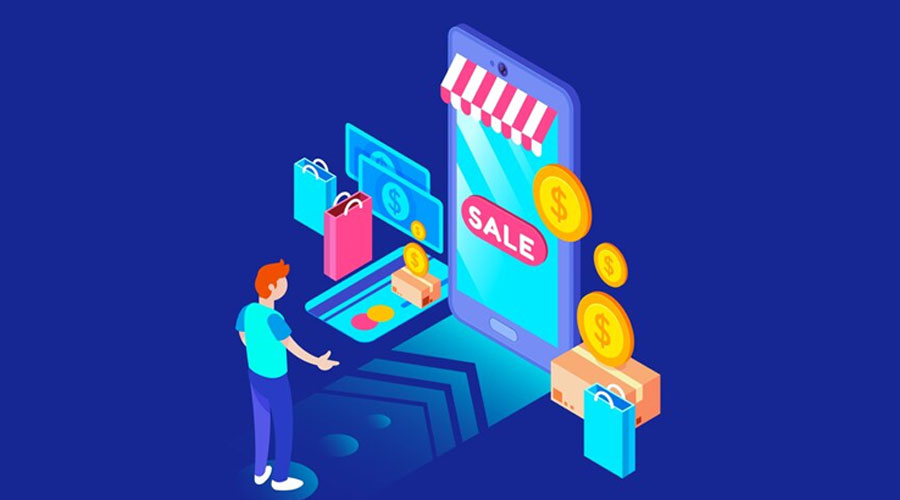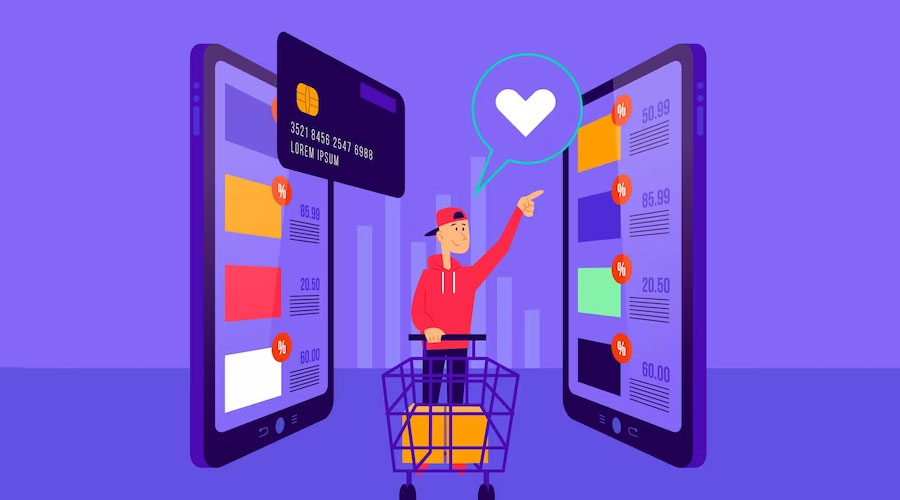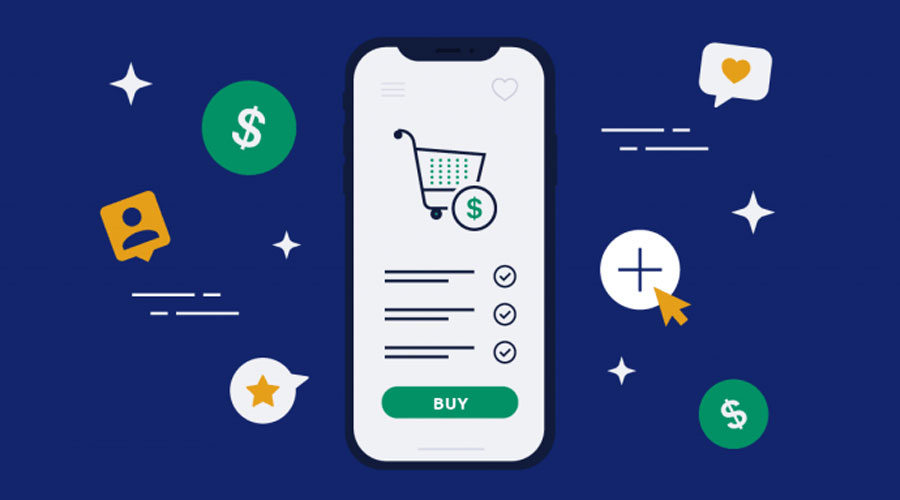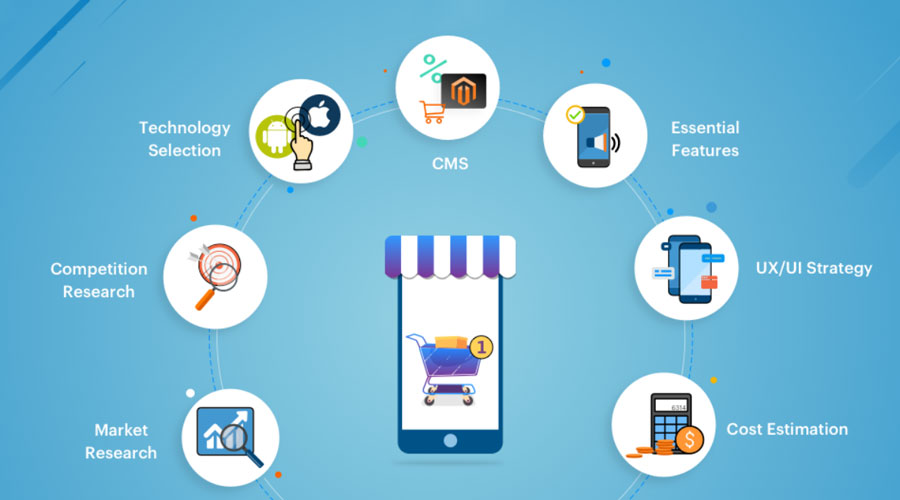Table of Contents
Introduction to Retail and E-commerce Apps
The retail landscape is constantly evolving, driven by changes in consumer behavior and technological advancements. In recent years, one of the most significant transformations has been the growing influence of e-commerce apps. These applications have become an integral part of the retail sector, reshaping the way consumers shop and businesses operate. In this comprehensive guide, we will delve deeper into the world of retail and e-commerce apps, exploring their origins, the impact they have had on the industry, and the key reasons behind their widespread adoption.
The Evolution of Retail
Retail, as a concept, has been around for centuries, with its roots traced back to ancient marketplaces and trading activities. Traditionally, retail involved the physical exchange of goods between buyers and sellers in brick-and-mortar stores. This model remained largely unchanged for generations.
However, the emergence of the internet and digital technology brought about a revolution in the retail sector. E-commerce, or electronic commerce, enabled businesses to sell their products and services online, eliminating the need for a physical store. This marked a fundamental shift in the retail landscape.
The Role of E-commerce Apps
While e-commerce websites played a crucial role in the initial stages of this transformation, the rise of smartphones and mobile technology took it a step further. E-commerce apps became the driving force behind the new era of retail. These apps are specifically designed to be used on mobile devices, providing an immersive and user-friendly shopping experience.
The primary function of e-commerce apps is to allow users to browse products, make purchases, and manage their accounts, all from the convenience of their smartphones or tablets. The integration of features like secure payment gateways, personalized recommendations, and one-click purchasing has made these apps an essential part of modern retail.
Key Advantages of E-commerce Apps
E-commerce apps offer several significant advantages for both consumers and retailers:
- Convenience: E-commerce apps bring the store to the consumer’s pocket. Shoppers can browse and buy products at any time and from anywhere, eliminating the need to visit a physical store.
- Personalization: These apps use data analytics and artificial intelligence to provide personalized product recommendations and content, enhancing the shopping experience.
- Accessibility: E-commerce apps are accessible 24/7, providing customers with the flexibility to shop whenever it suits them, even during non-business hours.
- Data-Driven Insights: Retailers can gather valuable data on customer behavior and preferences, helping them refine their marketing strategies and tailor their product offerings.
- Cost-Efficiency: Operating an e-commerce app typically incurs fewer costs than running a physical store. Retailers can save on expenses like rent, utilities, and staff salaries.
Challenges and Considerations
While e-commerce apps offer numerous benefits, retailers must also navigate various challenges:
- Intense Competition: The e-commerce space is highly competitive, with thousands of apps vying for consumers’ attention. Retailers must find ways to stand out.
- Technical Challenges: Developing and maintaining a reliable e-commerce app can be technically challenging. Ensuring security, compatibility, and a seamless user experience is essential.
- Logistics and Fulfillment: Efficiently managing logistics and order fulfillment is critical to meeting customer expectations, and it can be complex and costly.
- Marketing and Customer Acquisition: Attracting and retaining customers in the e-commerce space can be expensive. Effective digital marketing and customer engagement strategies are crucial.
- Cybersecurity: E-commerce apps handle sensitive customer information, making them attractive targets for cybercriminals. Strong cybersecurity measures are essential to protect customer data.
Key Features of Retail and E-commerce Apps
Retail and e-commerce apps are equipped with a wide range of features that enhance the shopping experience for customers and provide valuable tools for retailers to manage their online businesses effectively. Here are some key features that are commonly found in successful retail and e-commerce apps:
- User-Friendly Interface:
- Intuitive navigation and user-friendly design for easy browsing and shopping.
- Clear and organized product categories, making it simple for customers to find what they need.
- Effective search functionality with filters and sorting options.
- Product Listings:
- Detailed product descriptions, including specifications, size charts, and customer reviews.
- High-quality images and multimedia presentations for a better understanding of products.
- Multiple product views, such as zoom, 360-degree rotation, and videos.
- Shopping Cart and Checkout:
- Easy-to-use shopping cart for adding and managing items.
- A streamlined checkout process with multiple payment options.
- The ability to save multiple shipping addresses for convenience.
- Payment Integration:
- Secure payment gateways for credit/debit card transactions.
- Support for digital wallets like Apple Pay, Google Wallet, and PayPal.
- Integration of Buy Now, Pay Later services.
- Order Tracking and Notifications:
- Real-time order tracking to monitor the status of deliveries.
- Automated order confirmation and shipment notifications.
- Push notifications for order updates.
- User Accounts:
- User registration and profile management.
- Easy account creation and password reset.
- Order history and saved payment information for returning customers.
- Reviews and Ratings:
- Customer reviews and ratings for products and sellers.
- The ability for customers to leave feedback and recommendations.
- Review moderation to maintain quality and authenticity.
- Wishlist and Favorites:
- A wishlist feature for customers to save items for later purchase.
- The option to mark products as favorites for quick access.
- Shareable wishlists for gifting and recommendations.
- Personalization:
- Product recommendations based on browsing and purchase history.
- Customized content and promotions for individual users.
- Personalized product feeds and tailored shopping experiences.
- Inventory Management:
- Real-time inventory updates to prevent overselling.
- Alerts for low stock or out-of-stock items.
- Easy product and variant management for retailers.
- Customer Support:
- Live chat and chatbot integration for instant assistance.
- In-app messaging or contact forms for customer inquiries.
- Comprehensive FAQs and guides for self-help.
- Multilingual and Multi-currency Support:
- Localization for multiple languages and currencies to reach a global audience.
- Currency conversion and real-time exchange rate updates.
- Analytics and Reporting:
- Data analytics tools to track user behavior and sales performance.
- Sales reports, customer insights, and product performance analytics.
- Integration with Google Analytics and other analytics platforms.
- Loyalty Programs:
- Loyalty points, rewards, and discounts for returning customers.
- Referral programs to encourage customers to refer friends and family.
- Membership tiers with exclusive benefits.
- Social Media Integration:
- Seamless sharing of products and purchases on social networks.
- Social login options for easy account creation and access.
- Social commerce features for a more interactive shopping experience.
- Push Notifications:
- Targeted notifications for promotions, discounts, and personalized recommendations.
- Abandoned cart reminders to re-engage potential customers.
- Updates on order status and flash sales.
- Augmented Reality (AR) and Virtual Reality (VR):
- AR features for virtual try-ons and visualizing products in real-world settings.
- VR for immersive shopping experiences, such as virtual showrooms.
- Contactless Shopping:
- Contactless payment options, including NFC and QR code scanning.
- Curbside pickup and in-store pickup options for online orders.
- Return and Refund Process:
- Simplified return and exchange processes with automated return labels.
- Transparency in refund policies and processing timelines.
- Easy communication channels for return-related queries.
- Security and Privacy:
- SSL encryption and secure sockets for data protection.
- Compliance with data privacy regulations (e.g., GDPR, CCPA).
- Frequent security updates and vulnerability testing.
These features contribute to the success of retail and e-commerce apps by providing a seamless and secure shopping experience for customers while offering retailers the tools they need to manage their businesses efficiently. To stay competitive in the e-commerce landscape, businesses should continually evolve their apps by incorporating new features and technologies to meet customer expectations.
Benefits of Retail and E-commerce Apps
let’s delve deeper into the additional benefits of retail and e-commerce apps that make them indispensable tools for businesses in today’s digital landscape:
- Global Reach: E-commerce apps break down geographical barriers, allowing businesses to tap into a global market. This reach enables even small or niche businesses to compete on a global scale. A local boutique can now sell its unique products to customers on the other side of the world.
- Inventory Management: E-commerce apps come with robust inventory management systems. Retailers can easily track stock levels, set up automatic restocking alerts, and manage their inventory efficiently. This minimizes the risk of overstocking or running out of popular items.
- Targeted Marketing: These apps offer the capability to collect and analyze user data, which can be used to create highly targeted marketing campaigns. Whether it’s sending personalized discounts to loyal customers or retargeting ads to potential buyers, e-commerce apps help businesses get the right message to the right people.
- Cost Savings: Running a physical store involves various costs, including rent, utilities, and in-store staff. E-commerce apps reduce these expenses significantly. Additionally, digital marketing can often be more cost-effective than traditional advertising methods.
- Analytics and Insights: E-commerce apps provide detailed analytics that allow retailers to monitor customer behavior, sales trends, and the effectiveness of marketing campaigns. This data is invaluable for making informed business decisions and optimizing strategies.
- Customer Engagement: In-app features like push notifications, chat support, and personalized product recommendations enhance customer engagement. These features keep customers connected with the brand, leading to increased retention and brand loyalty.
- Reduced Shopping Cart Abandonment: E-commerce apps are designed to streamline the checkout process. This reduces the likelihood of customers abandoning their shopping carts, which is a common issue in online retail.
- Integration with Social Media: Many e-commerce apps integrate with social media platforms, making it easy for customers to share their purchases and experiences. This user-generated content serves as free advertising and can attract new customers.
- Flexible Shopping Experience: E-commerce apps provide flexibility for customers to shop when they want and how they want. Whether it’s late at night, on the go, or during a work break, customers can access the app at their convenience.
- Customer Reviews and Ratings: E-commerce apps often feature customer review and rating systems. This builds trust among potential buyers and provides valuable feedback to retailers for product improvement.
- Cross-Selling and Upselling: E-commerce apps can suggest complementary or higher-end products to customers, leading to increased sales. For example, when a customer adds a camera to their cart, the app might suggest compatible lenses and accessories.
- Scalability: E-commerce apps can easily adapt to the growing needs of a business. As the business expands, the app can accommodate more products, users, and transactions.
- Reduced Checkout Time: Quick and secure checkout processes with options for saved payment information and shipping addresses make online shopping efficient. Customers can make purchases in a matter of seconds.
- Multi-Channel Selling: E-commerce apps often integrate with various online marketplaces and platforms, enabling multi-channel selling. This means products can be listed on multiple platforms simultaneously, reaching a broader audience.
- Real-time Updates: Customers can receive real-time updates on order status, shipping, and delivery. This transparency increases trust and customer satisfaction.
- Better Insights into Customer Preferences: E-commerce apps track customer behavior and preferences, allowing businesses to make data-driven decisions regarding product offerings, marketing strategies, and customer service.
- Reduced Paperwork: E-commerce apps significantly reduce paperwork. Invoices, receipts, and order histories are stored digitally, making it easy for customers to access their purchase history and for businesses to manage records.
- Feedback and Improvement: E-commerce apps make it simple for customers to provide feedback, helping businesses continuously improve their products and services. This feedback loop can be invaluable for growth.
- Competitive Advantage: Having a well-designed, user-friendly e-commerce app can provide a competitive edge. It shows that a business is up-to-date with technology and prioritizes customer convenience.
- Adaptability to Mobile Devices: With the majority of online shopping now happening on mobile devices, e-commerce apps are optimized for mobile use. This ensures a seamless and enjoyable shopping experience for mobile users.
Mobile App Development in Retail and E-commerce
In the realm of retail and e-commerce, staying ahead of the curve is vital. The shift towards mobile app development has reshaped the landscape of the industry. Mobile apps have become essential tools for businesses aiming to provide a seamless shopping experience. In this article, we delve into the significance of add-on mobile app development in the retail and e-commerce sector. We will explore how these add-on features enhance the shopping experience, engage customers, and drive business growth.
The Role of Add-On Mobile App Development
Add-on mobile app development refers to the process of creating additional features and functionalities that supplement the core functions of a retail or e-commerce app. These add-on features are designed to enhance user experience, increase customer engagement, and ultimately boost sales. Let’s take a closer look at the key roles of add-on mobile app development in the retail and e-commerce space.
- Enhanced User Experience
One of the primary objectives of add-on mobile app development is to elevate the user experience. Retailers and e-commerce businesses understand the importance of creating a smooth and enjoyable shopping journey for their customers. Add-on features such as personalized recommendations, intuitive navigation, and easy-to-use interfaces contribute to a user-friendly experience.
- Customer Engagement
Add-on features are instrumental in engaging customers and keeping them actively involved with the app. This engagement can take various forms, including gamification elements, loyalty programs, interactive shopping experiences, and push notifications. Engaged customers are more likely to make purchases and become loyal to the brand.
- Personalization
Personalization is a driving force behind add-on mobile app development. Retailers can use customer data and behavior analysis to provide personalized product recommendations, content, and special offers. This not only enhances the shopping experience but also increases the chances of conversions.
- Data Insights
Add-on mobile app features can gather invaluable data on customer preferences, shopping habits, and behavior. Retailers can use this data to refine their marketing strategies, optimize product offerings, and make informed decisions to grow their businesses.
- Streamlined Navigation
Effective navigation is crucial in ensuring that customers can find what they’re looking for quickly and easily. Add-on features like advanced search options, filter tools, and sorting functionalities make it simple for customers to discover and purchase products.
- Social Integration
Social media is a powerful tool for engaging customers. Retail and e-commerce apps often incorporate add-on features that allow customers to share their purchases, reviews, and recommendations with their social networks, expanding the app’s reach and fostering a sense of community.
- Real-time Support
Add-on features may include real-time customer support options such as chatbots or live chat. Customers can get immediate assistance with their inquiries or issues, which can enhance trust and customer satisfaction.
Add-On Mobile App Development Trends
As technology evolves, so do the trends in add-on mobile app development in the retail and e-commerce industry. Here are some key trends to watch out for:
- Augmented Reality (AR) Features
AR is increasingly being used in retail and e-commerce apps to provide customers with immersive experiences. Customers can visualize products in their real-world environment before making a purchase, enhancing confidence and reducing returns.
- Voice Search and Voice Commerce
Voice-activated search and shopping have gained popularity. Add-on features enable voice search within apps, making it convenient for customers to find products and place orders using voice commands.
- AI-Powered Personalization
Artificial intelligence is being leveraged to provide more accurate and effective personalized recommendations. These AI-driven add-ons analyze user behavior and preferences in real-time to suggest products tailored to individual tastes.
- Virtual Fitting Rooms
In the fashion and apparel industry, virtual fitting rooms allow users to try on clothing virtually. This add-on feature reduces uncertainty about fit and style, encouraging more confident purchasing decisions.
- Mobile Wallet Integration
Add-on features often include mobile wallet and contactless payment options, making it easy for customers to make secure and hassle-free payments.
Examples of Successful Retail and E-commerce Apps
here are some examples of successful retail and e-commerce apps that have made a significant impact in the industry:
- Amazon: Amazon’s mobile app is a prime example of a successful e-commerce application. It offers a vast array of products, an easy-to-use interface, personalized recommendations, and convenient features like one-click purchasing. Amazon has revolutionized online shopping and is a global e-commerce giant.
- Alibaba: Alibaba’s e-commerce apps, such as Taobao and Tmall, have played a pivotal role in China’s e-commerce landscape. They provide users with a comprehensive platform for shopping, payment, and even social interaction. Taobao, in particular, is known for its innovative features, including live-stream shopping.
- eBay: eBay’s app is known for its auction-style and buy-it-now shopping experiences. It enables individuals to buy and sell a wide range of products, from collectibles to electronics. eBay’s app is user-friendly and has a strong focus on user ratings and reviews.
- Walmart: Walmart’s app brings the retail giant’s extensive product offerings to mobile users. It includes features such as in-store pickup, grocery delivery, and a savings catcher that automatically refunds the difference if a competitor offers a lower price.
- Zalando: Zalando, a European e-commerce platform, specializes in fashion and clothing. Its app offers a seamless shopping experience with features like a virtual dressing room, personalized product recommendations, and a wide selection of brands.
- ASOS: ASOS is a global fashion retailer with a strong online presence. Its app is tailored to fashion-forward consumers, offering a wide range of clothing and accessories. It also provides a unique feature where users can upload a photo to find similar products.
- Sephora: Sephora’s app is a leader in the beauty and cosmetics industry. It offers features like virtual makeup try-ons, personalized product recommendations, and a loyalty program that rewards frequent shoppers.
- Etsy: Etsy is a platform for artisans and crafters to sell their unique products. Its app connects buyers with handmade and vintage items. It focuses on personalization and allows users to connect with sellers directly.
- Nike: Nike’s app provides a direct channel for customers to purchase the latest sportswear and sneakers. It also offers exclusive content, fitness tracking, and early access to new product releases.
- Zara: Zara’s app is known for its fast-fashion offerings. It allows users to browse the latest collections, receive notifications about new arrivals, and shop online with ease.
These are just a few examples of successful retail and e-commerce apps. They showcase the diversity of products and services available in the digital shopping landscape and highlight the importance of features like personalization, convenience, and innovative technologies in driving the success of these applications.
Trends and Future of Retail and E-commerce Apps
let’s delve deeper into additional trends and the future of retail and e-commerce apps:
- Blockchain Technology: Blockchain is increasingly being explored for its potential to enhance transparency and security in e-commerce. It can be used for secure transactions, supply chain management, and the authentication of products, particularly in industries where counterfeit goods are a concern.
- AI-Powered Chatbots: Chatbots are becoming more sophisticated thanks to artificial intelligence. E-commerce apps are implementing AI-powered chatbots for customer service, enabling 24/7 support and more personalized interactions. These chatbots can assist with product recommendations, answer questions, and help with the purchasing process.
- Omnichannel Integration: The distinction between online and offline shopping is blurring. Retailers are striving for a seamless omnichannel experience, where customers can start their shopping journey in an e-commerce app and continue it in a physical store, or vice versa. This integration requires robust inventory management and data synchronization.
- Sustainable Packaging and Delivery: As sustainability becomes a more significant concern, e-commerce apps are working on eco-friendly packaging and delivery options. This includes using recyclable materials, optimizing delivery routes to reduce emissions, and offering carbon offset programs.
- 3D and Virtual Reality Shopping: Building on the concept of augmented reality, 3D and virtual reality shopping experiences are gaining traction. Customers can virtually try on clothing, explore products in a 3D environment, and even attend virtual showrooms and events through e-commerce apps.
- Voice Search and Voice Commerce: With the increasing popularity of voice-activated devices like smart speakers and voice assistants, e-commerce apps are adapting to voice search and voice commerce. Users can shop by simply speaking their preferences and orders, making the process even more convenient.
- Subscription Boxes and Services: The subscription model extends beyond products to services. E-commerce apps are offering subscription-based services for a wide range of industries, from streaming and cloud storage to meal kit delivery and fitness programs.
- Personal Data Privacy: With growing concerns about data privacy, e-commerce apps are placing a stronger emphasis on data security and transparency. Compliance with regulations like GDPR and the development of more secure authentication methods are top priorities.
- Hyper-Personalization: Personalization is evolving to hyper-personalization, where e-commerce apps use real-time data to provide the most relevant content and product recommendations. Machine learning and AI algorithms analyze user behavior to create individualized shopping experiences.
- Gaming and Social Commerce: Gamification and social commerce are merging, creating opportunities for users to shop while engaging with entertaining content. E-commerce apps are integrating features that enable users to participate in games, contests, or share their shopping experiences within the app.
- Instant Gratification: The desire for instant gratification continues to drive innovation in the form of same-day or even one-hour delivery services. E-commerce apps are partnering with local delivery services and optimizing their logistics to meet these demands.
- Emerging Markets and Global Expansion: E-commerce apps are increasingly targeting emerging markets as the next frontier for growth. As internet access expands and consumer behavior changes in these regions, retailers are keen to tap into new markets.
- Marketplace Integration: Many e-commerce apps are evolving into full-scale marketplaces, allowing third-party sellers to list their products. This diversifies product offerings and helps the app maintain a competitive edge.
- AI-Powered Visual Search: Visual search technology allows users to search for products by taking a picture or uploading an image. This simplifies the search process and enhances user experience, making it more convenient and accurate.
- Robotics and Automation: Some e-commerce apps are exploring the use of robots and automation in their warehouses and delivery processes to streamline operations and reduce costs.
The future of retail and e-commerce apps is brimming with innovation and adaptation to the changing demands and preferences of consumers. As technology continues to advance, we can expect these apps to become even more central in our shopping experiences, offering greater convenience, personalization, and sustainability, while also addressing the challenges of competition and cybersecurity. Staying informed and adaptable is crucial for businesses looking to thrive in this ever-evolving landscape.














